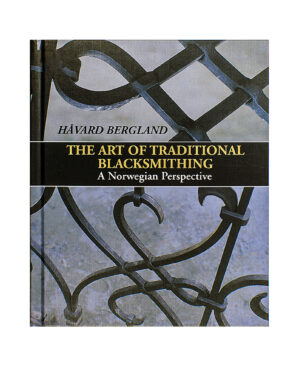Description
If you have ever wanted to learn blacksmithing but were too intimidated to start with metal heated to over 1,450 degrees Fahrenheit, or if you just didn’t want to invest the large amount of money required for a forge and anvil until you find out if you can do blacksmithing, then this book was written for you. Even if you already know some blacksmithing then this book could be the one thing you need to push you over the hump from a beginner blacksmith to an intermediate or even an advanced blacksmith.
This text will show you how to teach yourself blacksmithing without the dangers of burning yourself on hot metal or having to buy a lot of expensive blacksmithing equipment. By using clay you can learn how to move hot metal with your hammer to get the results you desire.
You will find that you can learn how to blacksmith much faster using clay than you could ever possibly do sweating and frustrated over an anvil. You don’t have to build a fire in the forge, wait for the fire to heat the metal, and then watch in disappointment as the metal gets too cold to work while you figure out where to hit it. Clay is always ready. It will remain soft enough to work, no matter how long it takes you to figure out where to hit it. Since clay moves just like hot metal but does not require all the time to heat, you can do a lot more hammering per hour. If you make a mistake with clay, you just remold it into the shape of a perfect brand new rod in minutes instead of throwing it away like you would with a mangled piece of metal. Repeat a blacksmithing technique in clay several times, then when you go to the forge you will be able to hit the metal the right way, in the right spot, and right away with confidence.
This book begins by describing the different kinds of clay that can be used. Next, construction details are given for an inexpensive device to cut the clay into the most common shaped metal rods used for blacksmithing. Details are given on how to make a small 2″ x 4″ section of common wood into an anvil top and how to make a substitute anvil horn with 3/4″ copper pipe. The only other tools you need are a hammer, cold chisel, and punch that you may already have in your garage.
Once you have the clay and tools, this book leads you through the basic blacksmithing techniques of drawing out, curls, twisting, upsetting, punching, and splitting. These are then used to do projects. The first project is an S-hook which is the Blacksmith’s version of the computer programmer’s “Hello World” program. This is then followed by making a roasting fork, a coat hook with decorative leaf end, friendly dragon head, and a horse head.
This book is 36 pages packed with information containing 5 line drawings and over 60 closeup photos to guide you step-by-step through the details of blacksmithing. Get this book, go to the hobby store and buy some oven-dry clay, and start blacksmithing today.










![ADVANCED DRAWING OF SCROLLS: FOR ENGRAVING ARTISTS, DESIGNERS, CRAFTSMEN BY RON SMITH [HARDCOVER]](https://i0.wp.com/artisanideas.com/wp-content/uploads/2022/09/Advanced-Drawing-of-Scrolls-for-engravers-artists-designers-craftsmen-by-ron-smith-pic-2.jpg?resize=335%2C500&ssl=1)

